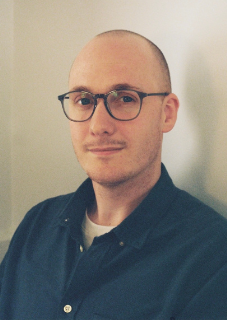Saturday, 5 September was supposed to be the day Australian history was irreconcilably changed. It was to be “Freedom Day”, the day when “real” Aussies took back control of the streets, their airways and their collective destiny.
Rather than changing it, the protests amounted to what might constitute a footnote in an awfully specific history of Australia. Disparate groups gathered in separate events around the country. Dozens of protesters were arrested, dozens more were fined with breaching Covid-19 restrictions, one protester jumped into Melbourne’s Albert Park Lake and all of it was livestreamed.
Despite the fizzle, Saturday’s “Freedom Day” remains concerning evidence of a growing and increasingly energised community of conspiracy theorists in Australia. A discernible presence among the protests and littered throughout the social media of their organisers is evidence of a malleable conspiracy theory called QAnon.
QAnon is not one coherent conspiracy theory, but thousands developing semi-independently in different online fora that all bend and twist truth around that central figure, “Q”.
QAnon is not one coherent conspiracy theory, but thousands developing semi-independently in different online fora that all bend and twist truth around that central figure, “Q”.
QAnon’s inception dates back to October 2017 when a self-alleged American intelligence insider codenamed “Q” began posting “drops” of information in online forums. These drops cryptically outlined an alleged deep state, a pseudo-religious geopolitical reckoning, a cabal of cannibal paedophiles run by Washington, Hollywood and Silicon Valley’s elite. According to QAnon canon, it is the direct intent of Donald Trump to blow this cabal apart.
It’s easy to scoff at these claims as outlandish and distinctly American. Despite the US origin of the theory, with children at the centre, it has always been global in scope. And followers don’t take up the whole conspiracy theory instantly. In fact, they may not even know about Q for some time.
Increasingly, QAnon is becoming a prevalent feature among parenting blogs and the content of wellness influencers. For their followers, these influencers offer a soft entry to conspiracy theories that can mark the start of a dangerous journey down the internet’s “rabbit hole”.
The broad nature of QAnon has allowed it to subsume other prominent conspiracy theory movements like the anti-vax and anti-5G movements, drawing red strings between them and all then back to elites and child sex trafficking. If the current global conspiracy theory landscape were like a bath, QAnon would be the drain around which the entire body of water is spiralling.
The thing is, child sex trafficking is real. But these conspiracy theories take abject realities as foundations and build superstructures of falsehood around them, often for profit.
And there is a litany of buyers. Globally, internet use has soared in companion with historic levels of isolation, a devastating combination for online radicalisation.
A sense of helplessness in the face of external forces may continue to rise in Australia. Victoria faces at least two more weeks of stage 4 lockdowns, Western Australia is cut off from the east, Australians are cut off from overseas family, and the first recession in almost three decades is starting to perforate declining jobseeker and jobkeeper payments.
QAnon is dangerous. Globally, it already has a body count and rap sheet and it could turn a significant portion of Australians against any potential Covid-19 vaccine. So, action must be taken.
QAnon and associated and linked conspiracy theories offer internet users entry to a global community of “doers”, taking “real action” at a deeply uncertain time.
Viral livestreams of troubling arrests for incitement, and the mass action of social media sites to shut down associated forums provide “confirmation” that the community are locked in a David versus Goliath struggle against global forces.
This is a wicked problem. QAnon is dangerous. Globally, it already has a body count and rap sheet and it could turn a significant portion of Australians against any potential Covid-19 vaccine. So, action must be taken.
But when that action can embolden followers it needs to be measured against the social cost of QAnon: the degree to which it encourages individuals to trust no one outside the tent, how it prepares them to be challenged by the people they love for what they have been coaxed into believing and how it rewards those who face off such conjecture. This all-encompassing mindset can devastate families and relationships.
These are intractable problems. But there are some steps that can be taken.
Since the dawn of home internet, e-safety campaigns have stressed the importance of educating children, essentially digitising the 1960s message about “stranger danger”. Then as now, however, danger often comes from trusted sources – in this case influencers – and QAnon has broad appeal encompassing older generations less well-versed in detecting false and misleading information. As tech giants have profited immensely from mass-internet and even from hosting and promoting conspiracy theories, they have a role to play in education. They need to take further steps to outline disinformation where it occurs, to take down dangerous forums, and importantly, outline clearly why they did.
Despite the sound legal basis in a pandemic context, cracking down on protest organisers for incitement is counterintuitive and at odds with the popular conception of the right to protest in Australia. Continuing to raid and arrest high-profile organisers will convince their followers of the urgency of their beliefs.
Finally, as Australia’s largely successful lockdown approach affirms, prevention is the best cure. Institutions need to earn trust with transparency and Australia needs to take seriously the way it approaches the public mental health implications of this turbulent year. To treat the emergence of these conspiracy theories as comical, absurd, uniquely American, and transient forces would be a dangerous lapse in judgement at a critical phase in their development.






